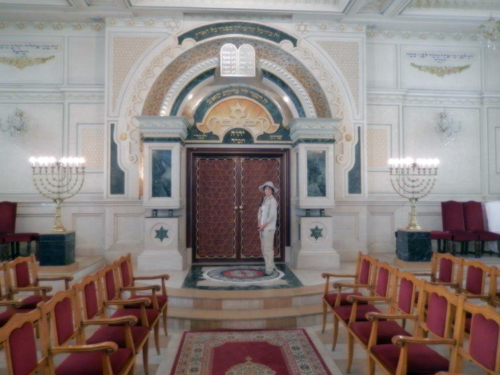
By Norman Greene
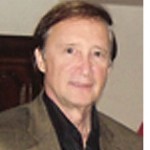
CASABLANCA, Morocco — Dressed in her head-to-toe hajab or jalaba, she reminded me of an Arabic version of San Diego’s late travel maven Gert Thaler as she skillfully guided us on our quest around the old Jewish Quarter in Casablanca. She was effusive, charming, funny and full of energy. We had outlined three things we wanted to accomplish during our half-day tour.
A weekend before our May departure for Morocco, my wife and I accompanied our daughter and son-in-law on a tour of a new house under construction in Alvarado Estates. Friends of my daughter’s for many years, Eric and Peggy Sands’ home is being built on Yerba Santa Drive. During our extensive walk-though, the subject of our trip to Morocco came up and we were surprised to learn that Eric’s grandfather had been born and raised in Casablanca.
Eric asked for a personal favor. Could we please find the house where his grandfather, Solomon Pinto, once lived and take a few photos of it? Eric had spent his summers in 1966 and 1968 there. Well, that gave us the start of a little mission in this very modern, French city…one that lacks the charm and character of the rest of amazing Morocco.
We also had read about a Jewish Museum in Casablanca that we wanted to investigate. So that was a second goal of our planned visit. Our final activity there was an attempt to meet Jean-Daniel Vitalis a French Moroccan childhood friend of Carmel Valley resident Joanne Laverson, a friend of a friend. My wife likes these challenges. Other than the incredible Hasan II Mosque and the touristy, but charming, “Rick’s Café” of Ingrid Bergman and Humphrey Bogart movie fame, there really isn’t much to see in all of Casablanca. So our three goals gave us a purpose for being there.
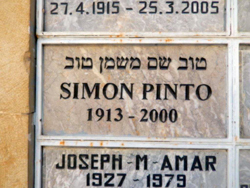
It took a bit of sleuthing on our guide’s part since the address Eric gave us was on a street that had been renamed a number of years ago. But she was up to the task and along with our extremely capable driver, Abdou Tabib Abdenabi, our guide found the new address opposite a closed synagogue on the renamed street. We took our pictures for Eric. Then our guide suggested we might like to visit an operating synagogue on the same street, a block away on the other side of a main boulevard. That was some initiative on her part and the next thing we knew, we were walking into the walled courtyard of the well maintained building. There are about 150 Jews living in Casablanca today and, as we were told, this is one of the few Casablanca congregations still functioning in this liberal Islamic country.
As we looked around the well-worn building and its charming courtyard, my eye was drawn to a Wall of Honor. There in bold letters was what I thought was Erik’s grandfather’s name on a marble plaque. The name Simon Pinto literally jumped off the wall as I was walking by. Another photo opportunity. Mission 1 accomplished, I thought, but later we realized Simon Pinto was not the same as Solomon Pinto. Meanwhile, however, we had started to gain an appreciation for the tolerant, “live and let live” relationship of the peoples of Morocco.
About 60% of the Moroccan population is Berber, a people who predate the Arabs who immigrated to the country from Saudi Arabia centuries ago. Many Berbers claim to be apart of the lost tribes of Israel. They incorporate the Magen David into much of their art work, carpets, cloth and jewelry. We were told that some speak Hebrew, although we never encountered any who did.
The remaining population is divided: some 30% are Arabs, 8% are Touareg and the remaining folks are called Andalusians to denote that they left Spain during the Inquisition. Everyone speaks French, as well as their own native languages. The amazing thing is that they all seem to get along quite well with each other. As we traveled throughout the country, we witnessed only cordial relations between the various groups as they interacted with one another.
For centuries there was a very large Jewish population in Morocco. A majority of the Jews left Morocco after the creation of the State of Israel. They resettled in Israel, Canada and the U.S., but to this day still hold dual citizenship with their new home states and with Morocco. At the time of the Inquisition, Jews were welcomed to Morocco since their professionalism and business acumen was admired and needed. As a trusted people, the Jewish Quarters were always constructed next the King’s palaces and Jews played a prominent role in the King’s court and economy. Even today, a chief advisor to the present king is Jewish. Remarkable when you think of the current Arab world.
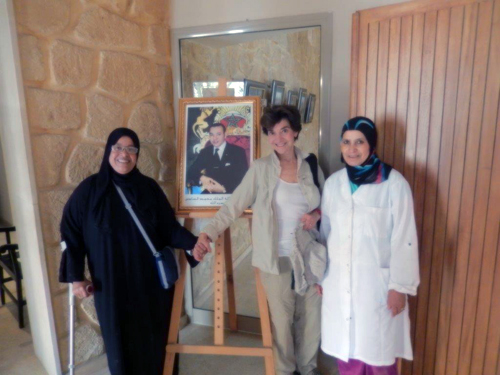
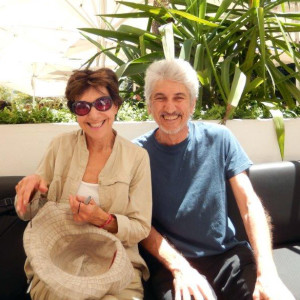
Our guide then instructed our driver how to reach the Jewish Museum. Naturally, once there, there was a problem. It was Shabbat and the Museum was closed. Never daunted, our guide began pounding on the Museum door. I thought for sure guards would appear, but instead an Arab woman caretaker opened the door. The two women embraced and the next thing you knew, the caretaker was inviting us in to the closed museum. She turned on all the lights and we were given free reign to visit all the modern, well lighted and documented exhibits.
The kindness of this Arab caretaker impressed us as much as the museum, itself.
Our second mission accomplished, we set out to meet Jean-Daniel Vitalis. Bobby spoke to him in French and we settled on a sunny patio restaurant, “Chez Paul,” in a section of Casablanca that could have been La Jolla or Beverly Hills. It was lovely and populated by a chic clientele. Over fresh orange juice and coffee, we shared information about Joanne and life in San Diego and Casablanca. Jean-Daniel was charming.
The day tour was a huge success. Obviously, it’s all about who you know…even in Morocco.
*
Norman Greene is a freelance writer based in San Diego. He may be contacted via norman.greene@sdjewishworld.com
Glad you had a good time in Morocco, country of respect, tolerance and friendship.
Long live the Kingdom of Morocco
very good article and as a Moroccan I’m glad you had a fantastic time in our country and that you could appreciate first hand that a Muslim country could also be a very tolerant one. A few points if I may:
– Morocco is the only muslim country (and probably one of the only countries in the world) that recognises judaism as a key component of national identity (in the preamble of our constitution)
– Moroccan Jews serve in all fields and positions, including ministers and parlementarians. They have complete freedom of religion and can use rabbinical tribunals to settle matters of personal and family law. They can educate their children in Jewish schools
– As you rightly pointed out Moroccan jews abroad never forgive their identity and citizenship
– Moroccans are essentially all of the same arab-berber stock. The 60% figure you quote is actually the percentage of people who speak berber. The rest of the population, like me, does not speak it but is essentially arabic speaking berbers. Some of us claim descent from muslims (and jews) who were expelled from Spain. We do not have a substantial tuareg population I’m afraid but we do have African stock.
– Moroccan Jews are divided in two groups: those who fled Spain and those who were native Jewish berbers (some established in Morocco for thousands of year). As a result (and again like their muslim brothers) Moroccan jews have arabic (eg Amar in your article), berber and spanish last name (eg: Pinto in your article)
– Did you know than when the French tried to impose the yellow star to Moroccan jews the King of Morocco refused and declared that if forced he and his family would also wear it?
Hi, G.M just to correct you it was the Germans who wanted to empose the yellow star not the French ! I also agree with you on that 60 % figure! They always got it wrong and I know why? Glad you guys enjoyed it….
Pingback: Online News MoroccoWho do you know in Morocco? - San Diego Jewish World » Online News Morocco